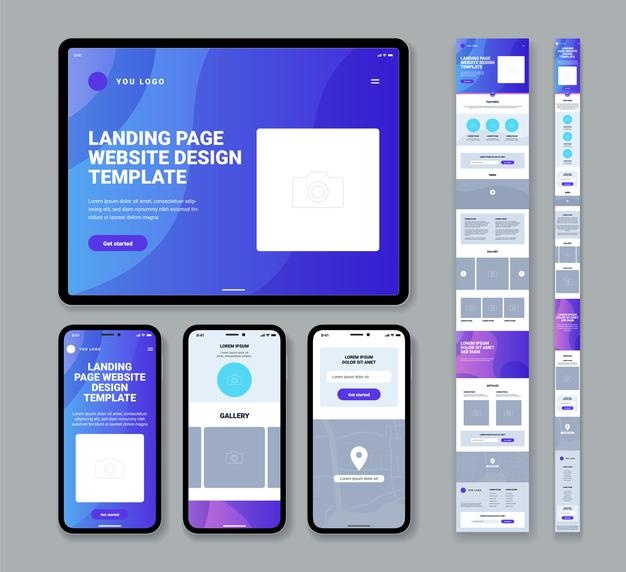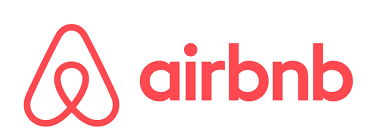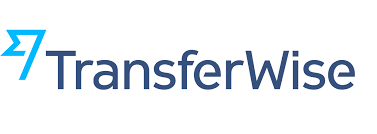
After clicking on an ad or a link on Google (or other search engines), Youtube, Twitter, Facebook, Instagram, or an email, the user is directed to a landing page. A landing page is a type of web page that digital marketers use to collect leads as part of a digital marketing campaign. It differs from regular web pages in that it is designed to convert visitors into leads.
The CTA or Call to Action, on a landing page directs visitors to the products or services that a brand has to offer. As a result, it differs from a web page in that it does not entice you to explore the page or the business further. Instead, its main purpose is to persuade visitors to execute a specific action.
Difference between a homepage & a landing pages
The goal of a landing page is to get people to convert. Its goal is to convert leads into customers and prospects into sales. A homepage, with its buffet of attractive things, has no such reservations. From a home page, you can go anywhere. It serves a different function, has broader CTAs, and has many more links than a landing page should. You can read more about the team, visit the service page, or browse the job aisle for a few minutes.
A homepage is, by definition, the place where the brand’s image, idea, services, and ideology are shown. The site will direct you to anything you want to know about the brand or connect with. A landing page is the polar opposite of a web page. It all boils down to one thing: making the conversion. All of the adverts, as well as the page’s overall design, are intended to make that one button that can convert leads to customers look so appealing that any passing traffic cannot help but fall to its allure.
Types of landing pages

While all landing pages have the same goal, they are not all created in the same way. They are primarily categorised into three categories:
1. Lead generated
The lead capture or lead generator type is obviously the first. This landing page is designed to gather as much information as possible about potential customers.
A form is generally used as a CTA on lead generation pages. The owner of the landing page collects precise information about their clients using these forms, including names, email addresses, and phone numbers, as well as their professions, localities, and ages. This information is used for two separate objectives. One, it allows you to communicate with your leads in order to more effectively convert them while also cultivating a positive image of your company in their minds. Two, it allows you to gain a better understanding of your consumer base. This type of data is priceless to any digital marketer since it allows them to focus their efforts and campaign funds on the population most likely to buy items and subscribe to your services.
2. Click-through landing pages
The term “click-through landing pages” describes exactly what they are. Instead of collecting consumer data like lead gen pages, they focus on clicks to make sales right away. Lead generation pages are usually more effective for service-based businesses. Click-through landing pages are ideal for e-commerce businesses, as they lead customers directly to a product or checkout page, resulting in a sale. To urge you to buy a product, click-through pages usually feature only a CTA button and attractive information about it.
3. Sales Pages
Sales landing pages are one of the most challenging to develop since they require a fine balance. You don’t try to collect data on a sales landing page. You also don’t try to sell something as hard as you would on a click-through landing page.
A sales landing page includes more than a Call to Action button that leads to a straight transaction. It contains aspects such as promotions and advertisements, all of which are aimed at promoting the sale of that specific product. It tries to pique the visitors’ attention while also attempting to persuade them to buy or subscribe to the thing you’re selling. As a result, the design of this page must be hyper-aware of the target consumer and where they are in the sales funnel.
A sales landing page is thus about negotiation, awareness of one’s customer’s wants, and flawless salesmanship – and if you can achieve that balance, you’re sure to strike gold.
Importance of landing page

Many individuals undervalue the importance of landing pages. The finest landing page designs may not only help you convert leads into purchases, but they can also help you improve your brand image while learning more about your target market. In most cases, brands direct their inbound traffic to their home page. However, as previously stated in previous sections, a home page contains far too many distracting aspects to effectively serve as a landing page. A well-balanced landing page can do the following:
- Create a positive brand image in the minds of customers: Even if the lead does not convert into a sale right away, a well-designed landing page with a consistent voice and style may establish a strong brand image in the eyes of your potential customers. Even if they leave the page without purchasing anything, they are more likely to return if they need to purchase or subscribe to that product or service in the future.
- Increases your credibility: The finest landing page designs will include not only a Call to Action button, but also additional aspects related to the product and your brand – features that will not only assist you in making the sale, but will also help you build brand credibility. Testimonials from prior users or buyers are one such piece. Customer reviews can persuade people to buy a product significantly more effectively than any advertisement.
A strong landing page offers value to your website. It can have a long-term impact on your brand’s image in the eyes of new and returning customers, in addition to improving on-page SEO and driving traffic to a product.
Landing page best practices
Landing pages have a negative reputation since they are thought to be difficult to build and maintain. However, if you keep the following elements in mind, you’ll be able to create a landing page that accomplishes exactly what it needs to do – convert leads with a single click:
1. Focus on long-tail keywords
Long-tail keywords are considerably easier to rank for than short-tail keywords, as any digital marketer worth their salt knows. So employ long-tail keywords often — but wisely — on your landing page. This will help the page (and your website) rank higher by improving your on-page SEO.
2. Improve page loading speed
Make sure your landing pages are optimised to load quickly. They should be simple to optimise because they only serve one goal. Make sure any photos you use, for example, are scaled-down. Don’t cram elements on your page that aren’t directly related to persuading visitors to click on the call to action. The addition of too many items will cause the page’s loading time to grow unnecessarily, increasing the user bounce rate.
3. Build backlinks

Obtain backlinks from reputable and high-authority websites. This will boost your SEO and drive more visitors to your landing page. Visitors are more likely to trust your products if they arrive at your page from a trusted source.
4. Shareable content
This may be more difficult to achieve, but attempt to come up with intriguing and original content that will encourage people to share your landing page and increase your click-through rate. This will boost your Google rankings and generate organic traffic to your page.
5. Segment your traffic
Don’t go for a one-size-fits-all approach. Almost every product caters to a variety of buyers. Inbound traffic will be more likely to click on your CTA if you design a separate landing page for each of those groups.
How to optimize landing pages for conversions
- Write captivating headline
Almost always, the headline is the first thing a visitor sees. If you can sum up your brand in a single headline, it will not only assist your customer understand you better, but will also help create user expectations for your brand.
Remember that even if a lead does not convert right away, a good headline can generate significant recall value, bringing them back to you when they do require the product or service you offer.
- Position your CTA’s above the fold
The CTA is the most crucial aspect on this page, so keep that in mind. Instead than relying on the user scrolling down to find it, put it above the fold.
- Offer something unique in your service
Make a list of your distinct selling points. What distinguishes your company from others that offer the same service? Do you have any special offers or discounts? Is there a feature in your product that no one else has? Are your goods long-lasting? Make a list of those points and observe as more leads convert than previously.
- Use bullet points
Nobody enjoys reading long passages of text. List the benefits and characteristics of your product in brief bullet points. Do not put your faith in the patience of your visitors; if they become bored, they will become distracted and depart. You make it easier for visitors to notice and take note of text by breaking it down into smaller, more digestible portions.
- Provide social proofs
Authentic social proofs, complete with name, age, and other pertinent information, can boost the credibility of your landing page, and thus your brand and the product(s) on offer. Solicit genuine testimonials from happy clients and try to include them into the landing page.
- Use videos to deliver your message
Visual aids are usually beneficial. While clear, engaging words are important, attempt to incorporate visuals such as films, animations, and photographs that show your product/services in action.
- Experiment with variations
It’s likely that your product doesn’t cater to just one type of customer. As a result, one landing page design may not meet everyone’s preferences or requirements. Use multiple keywords and links to direct visitors to diverse landing page designs that cater to the various types of people who might be interested in purchasing your product.
- Provide your contact details
Telling people how to contact you can help your brand gain even more credibility. It’s a guarantee that they’ll be able to contact you if they have any doubts, questions, or worries.
- Repeat your CTA
Repeating the CTA is the most effective approach to make your argument. If the user scrolls past the first CTA, a compelling second CTA can improve the number of clicks.
- Use minimal images & bigger fonts
There are more diversions for visitors if there are too many components on the landing page. Furthermore, adding additional photos to a page slows the page’s loading speed, raising the bounce rate. Larger fonts, on the other hand, can be used to draw the user’s attention to a specific region of the page— ideally, the CTA button.

Landing Pages Examples
It may not appear like creating a nice landing page is simple. With their exact, balanced, and quickly created landing page designs, however, some firms have been setting the bar rather high. So, in case you’re stuck for ideas and need some inspiration for what makes a well-balanced landing page, here are some examples of brand landing sites that have nailed the balance between salesmanship and authority:
1. Shopify

Shopify‘s trial landing page very much takes the cake when it comes to user-friendliness and sheer simplicity. Shopify’s home page covers all you need to know to sign up and start selling with only a few words and tidy bullet lists describing the various rewards and specifics.
2. Airbnb

Airbnb’s landing page is geared toward people who can afford to rent out a house, a room, or a couch. Its CTA entices potential hosts by displaying an estimate of how much money they can make by letting people crash in a room they don’t use for a few days. Once you’ve entered your information, the estimate will become more precise. Is there anything more motivating than the possibility of easy money?
3. TransferWise

The landing page for TransferWise emphasises precision. Each of its acts is distinct from the next, ensuring that you are never led somewhere you don’t want to be.
Do you need to send money? The transfer form is conveniently located. Do you want to be compensated? Scroll all the way to the middle. If you wish to join up for the service, go to the far right.
The division of CTAs based on your immediate needs may appear basic, but it is actually a brilliant idea. It establishes a distinct beginning point for each distinct need, demonstrating once again that simplicity is genuinely beautiful.
Time to Build Your Own Landing Page
It’s not easy to create a nice landing page. However, if you keep in mind that the goal of such a page is conversion and conversion only, the process becomes much easier. A well-designed landing page can be a very effective tool. It may provide your website and brand the traffic and credibility you’ve always dreamed of if you use it correctly.
Also Read: